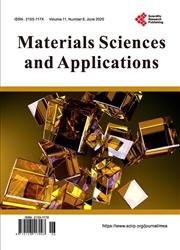Hydrogen Solubility in Liquid and Solid Pure Aluminum—Critical Review of Measurement Methodologies and Reported Values
引用次数: 5
Abstract
Reliable information on the solubility of hydrogen in aluminum and its alloys is critical to the effort of the aluminum industry to control and ameliorate the usually deleterious effects of hydrogen on the properties and performance of pure aluminum and aluminum alloy products. Unfortunately, there is a significant disparity between published values of hydrogen solubility in pure aluminum and aluminum alloys. This is because the measurement of the extremely low soluble hydrogen concentration in aluminum and its alloys is experimentally difficult. Also, the reproducibility, accuracy, and reliability of the hydrogen solubility values are very sensitive to the measurement techniques, test conditions, chemical composition, and state of the aluminum sample. Thus, no serious discussion of the reliability of reported values of hydrogen solubility in aluminum and its alloys can be undertaken without a critical assessment of the fundamental principles of the experimental techniques used in the determination of the reported values. In this article, a critical review of the fundamental principles of the experimental techniques used in the measurement of hydrogen solubility in liquid and solid pure aluminum and aluminum alloys is presented. In addition, the reliability and possible accuracy of reported values of hydrogen solubility in solid and liquid pure aluminum are critically assessed. Empirical equations for calculating hydrogen solubility in liquid and solid pure aluminum as a function of temperature and pressure, derived from the most reliable sets of data are recommended. At 101.3 kPa (1 atm.) hydrogen partial pressure, the most reliable values of hydrogen solubility at the melting point (833 K) of pure aluminum are 0.71 cm 3 /100g (i.e., 6.32 × 10 −5 wt.%纯铝在液体和固体中的氢溶解度——测量方法和报道值的关键综述
关于氢在铝及其合金中的溶解度的可靠信息对于铝工业控制和改善氢对纯铝和铝合金产品的性能和性能通常有害的影响是至关重要的。不幸的是,在纯铝和铝合金中氢溶解度的公布值之间存在显著差异。这是因为测量铝及其合金中极低的可溶氢浓度在实验上是困难的。此外,氢溶解度值的重现性、准确性和可靠性对铝样品的测量技术、测试条件、化学成分和状态非常敏感。因此,如果不对测定报告值所使用的实验技术的基本原则进行严格的评估,就不可能对报告值在铝及其合金中的氢溶解度的可靠性进行认真的讨论。在这篇文章中,一个关键的审查的基本原则,用于测量氢溶解度在液体和固体纯铝和铝合金的实验技术提出。此外,报告的氢在固体和液体纯铝中的溶解度值的可靠性和可能的准确性进行了严格评估。经验公式计算氢溶解度在液体和固体纯铝作为温度和压力的函数,从最可靠的数据集导出推荐。在101.3 kPa (1atm .)氢分压下,纯铝熔点(833 K)氢溶解度的最可靠值为0.71 cm 3 /100g(即6.32 × 10−5 wt.%)
本文章由计算机程序翻译,如有差异,请以英文原文为准。
求助全文
约1分钟内获得全文
求助全文

 求助内容:
求助内容: 应助结果提醒方式:
应助结果提醒方式:


